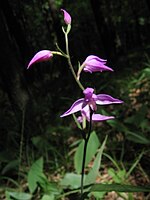Whiteway Colony
1898 establishments in the United KingdomIntentional communities in the United KingdomPopulated places established in 1898Stroud DistrictTolstoyan movement ... and 3 more
Use British English from March 2015Utopian communitiesVillages in Gloucestershire
Whiteway Colony is a residential community in the Cotswolds in the parish of Miserden near Stroud, Gloucestershire, United Kingdom. The community was founded in 1898 by Tolstoyans and today has no spare land available with over sixty homes and 120 colonists. At the beginning, private property was rejected and personal property shared; however, today the colonists' homes are privately owned and sold at market value. As the colony abandoned Tolstoy's philosophy it has been regarded by many, including Mohandas Gandhi who visited in 1909, as a failed Tolstoyan experiment.
Excerpt from the Wikipedia article Whiteway Colony (License: CC BY-SA 3.0, Authors).Whiteway Colony
Main Lane,
Geographical coordinates (GPS) Address Nearby Places Show on map
Geographical coordinates (GPS)
| Latitude | Longitude |
|---|---|
| N 51.790634 ° | E -2.117018 ° |
Address
Main Lane
Main Lane
GL6 7JB
England, United Kingdom
Open on Google Maps








